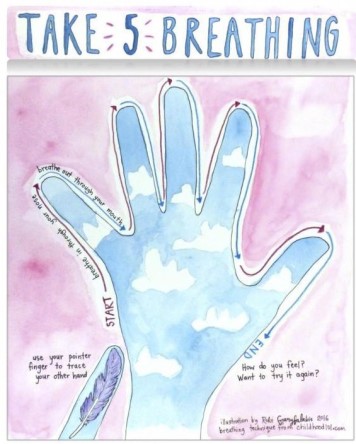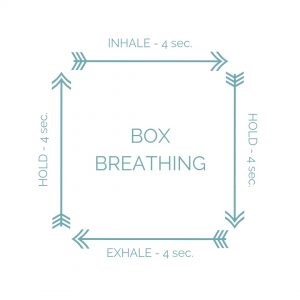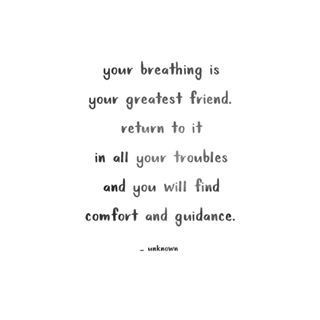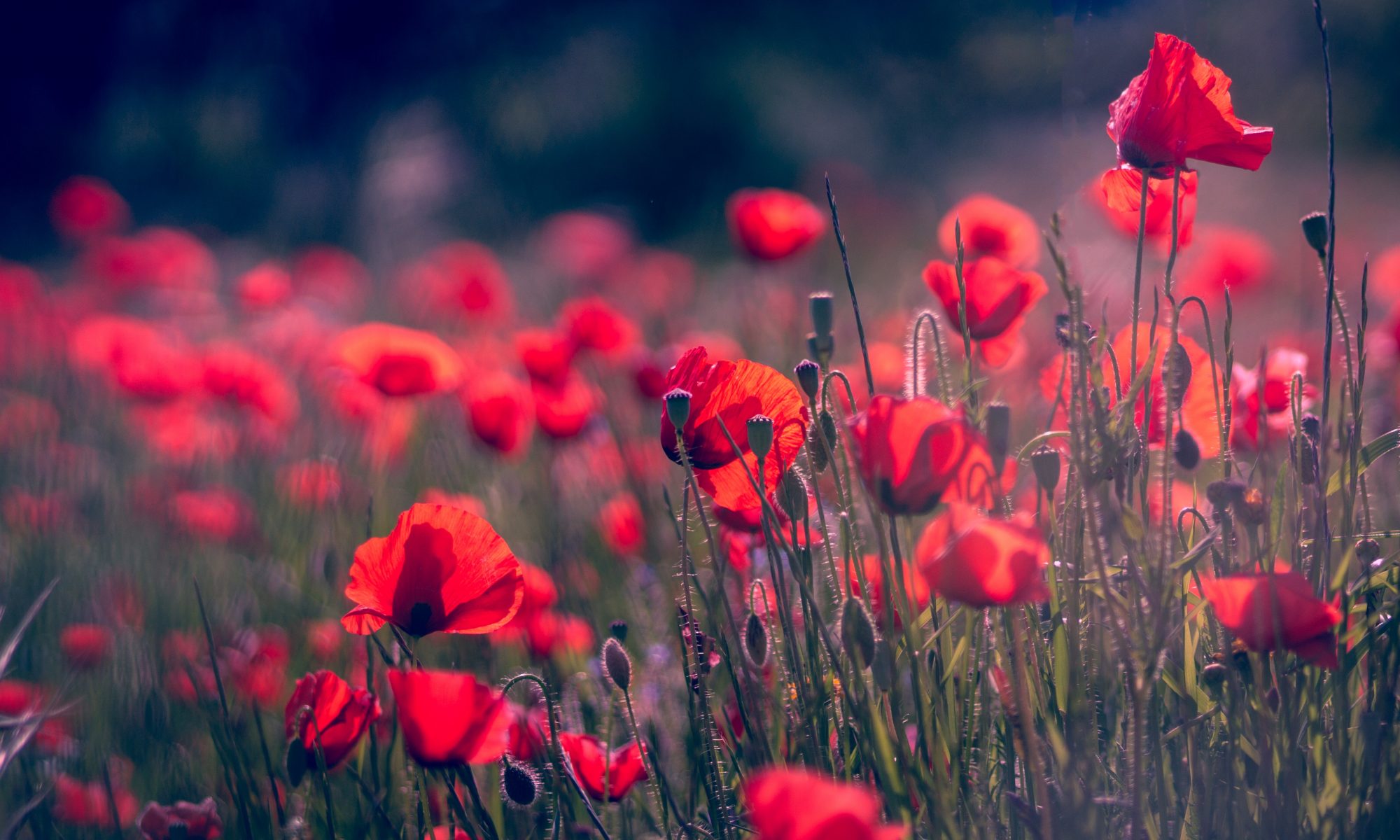Alexa Cutteridge, Head of Curriculum PE and Assistant Head of Year 7 looks at the power of your breath as a key mindfulness and well-being tool in schools.
As described by Jon-Kabat-Ziin, Mindfulness means ‘paying attention in a particular way: on purpose, in the present moment, and non-judgementally’ (Mindful Staff, 2017). Breath work or Pranayama if frequently used as a mindfulness tool and as described by the Yoga Journal Online here ‘is the formal practice of controlling the breath, which is the source of our prana, or vital life force.’
Breath work has been used for thousands of years as a form of meditation in addition to being a key part of yoga and mindfulness practices. Importantly, when we connect to our breath, we connect to the present moment which help to stop ourselves moving back into the past or jumping ahead into the future.
In Summer 2020 during the Guided Home Learning modules, the Y12 and Y13 explored the power of their breath and similarly this academic year Year 7 have looked at the ways in which to let your ‘breath be your anchor’ to calm their nervous system and sooth them in times of worry or challenge. I have also used breath work on the sports field, with my netball and tennis teams, to focus the mind and calm the nerves before high-stake matches – it has been so rewarding to see the positive results from such a simple tool.

Below are the key benefits:
- Conscious breathing can increase attention and focus the mind which can help concentration in the classroom (Holcombe, 2012).
- Deep breathing can lower blood pressure and creates a sense of calm – by breathing fully, you activate your parasympathetic nervous system, and as a result slow down your heart rate and lower your blood pressure.
- Deep breathing can reverse the ‘fight or flight’ response and reduced the release of stress hormones: cortisol and adrenaline.
- Studies have shown) that breath work can help treat mental health disorders including depression and PTSD. (Seppälä, Nitschke, Tudorascu, et. al., 2014)
- Deep breathing can enhance the quality of sleep (Newsom, 2020).
- As stated by the The Editors at Chopra (2020) ‘breathwork can also be spiritual’. When you practice deep breathing you connect with your true Self and you can let go of your ego and any other attachments you have. It is therefore quite common that people who practice breathwork can experience spiritual awakenings or similar experiences.
Further benefits and evidence to support mindfulness which include breathing tools, can be found here:
Mindfulness: Finding peace in a frantic world
Mindfulness in Schools Project
4 breathing tools for schools and beyond:
Finger breathing

A finger breathing practice is where you trace the outline of your hand with the index finger of the other. On the movement up the side of the finger you breathe in and on the way out you breathe out. It is a super simple tool but can be used subtly in the classroom and allow pupils to focus on their breath and away from any worries or troubles they may have.
Box breathing

Famously used by the Navy SEALS, box breathing allows you to reset your breath, in particular times of high stress and when in fight or flight mode.
- Breathe in for the count of 4.
- Hold your breath for the count of 4.
- Breath out for the count of 4.
- Hold your breath for the count of 4.
- Repeat for as long as necessary.
7/11 Breathing
This practice is regularly used in counselling and psychotherapy and is particularly helping in dealing with panic attacks and moments where we are caught in rumination and worry. The practice involves breathing in for 7 counts and breathe out for 11. You continue to breathe normally however, if you have to fit the numbers to the breath rather than the other way round then that is fine. The concept is that the out breath is longer than the in breath which creates an automatic effect of calming your down, slowing your heart rate and taking you into a state of balance (Mindfulness in Schools Project, Teacher Notes, 2016).
Ujjayi Pranayama oceanic breathing
“Ujjayi Pranayama is a balancing and calming breath which increases oxygenation and builds internal body heat.” —Krishnamacharya

This breath is very often used in Ashtanga and Vinyasa yoga but can also be use in a seated position as part of a breathing practice off the yoga mat. It allows us to anchor the fragmented mind and also allows us to be energised, as well as calm.
Watch how to here with Adriene:
In addition to these four breathing tools, it is also important to notice moments in the curriculum where breath work plays a key role such as Sport, Drama and Music, and is perhaps already creating hidden opportunities to support well-being.
There is no one size fits all when it comes to well-being tools, but it is certainly worth carving out time in schools to exploring breathing tools and empowering pupils to be curious about what benefits they can gain from them for both their school career and beyond. The best bit about using your breath as a well-being tool is that it is always available to you and is completely free – no excuse not to at least try it!

References:
Deepak, Chopra, M.D (2019) A Great Addition to Meditation: Conscious Breathing. Available at: https://chopra.com/articles/a-great-addition-to-meditation-conscious-breathing
Holecmobe, Kate (2012) Breathe Easy: Relax with Pranayama. Available at: https://www.yogajournal.com/practice/healing-breath/
Mindful Staff (2017) Jon Kabat-Zinn: Defining Mindfulness. Available at: https://www.mindful.org/jon-kabat-zinn-defining-mindfulness/
Newsom, Rob (2020) Relaxation Exercises to Help Fall Asleep. Available at: https://www.sleepfoundation.org/sleep-hygiene/relaxation-exercises-to-help-fall-asleep
Seppälä, E.M, Nitschke, J.B, Tudorascu, D.L, Hayes, A, Goldstein, M.R, Nguyen, D.T.H, Perlman, D and Davidson, R.J (2014). Breathing-based meditation decreases posttraumatic stress disorder symptoms in U.S. military veterans: a randomized controlled longitudinal study. Journal of Traumatic Stress, [online] (4):397-405. Available at: https://pubmed.ncbi.nlm.nih.gov/25158633/
The Editors of Chopra, (2020). How Breathwork Benefits the Mind, Body, and Spirit. Available at: https://chopra.com/articles/how-breathwork-benefits-the-mind-body-and-spirit

